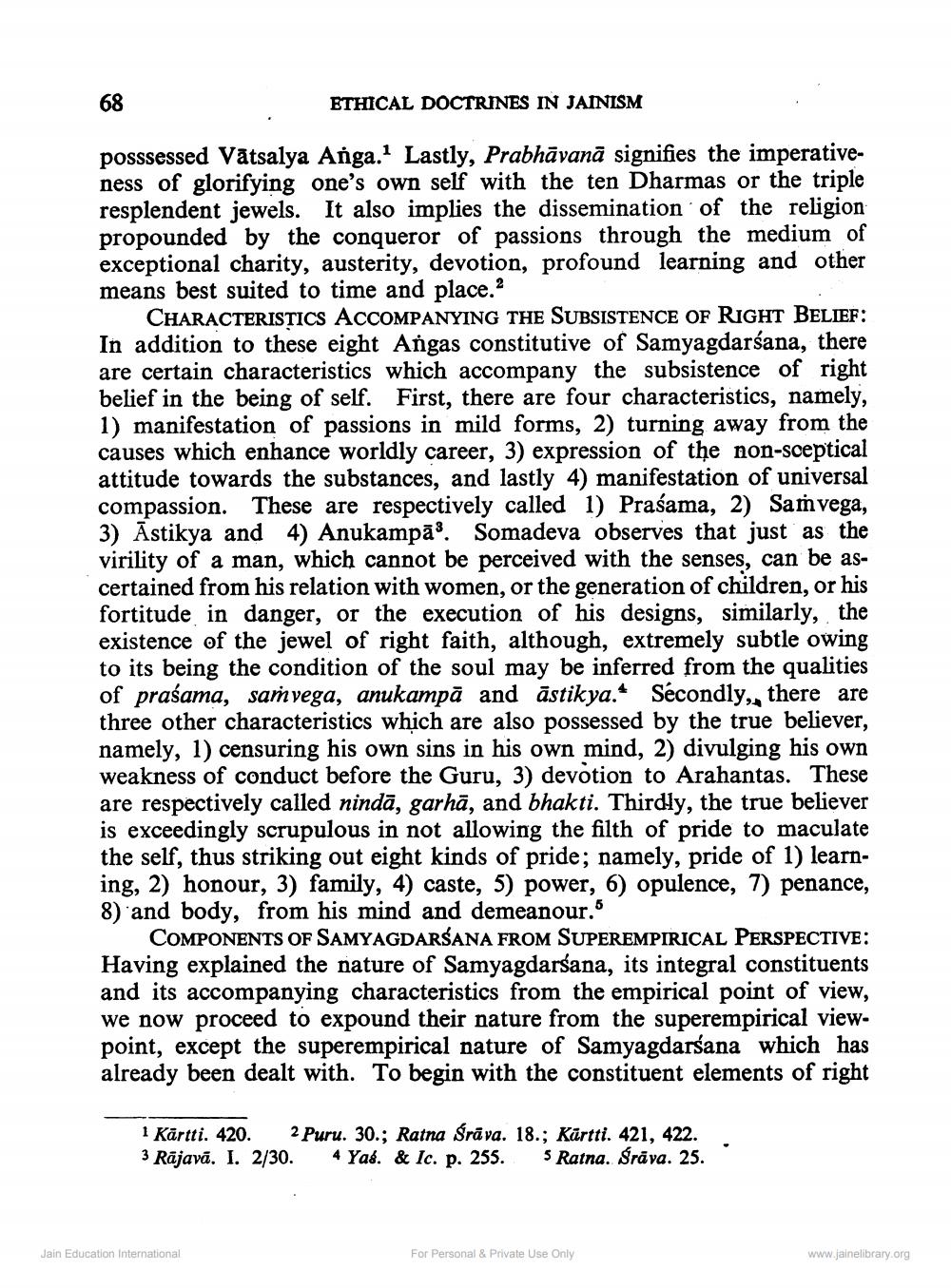________________
68
ETHICAL DOCTRINES IN JAINISM
posssessed Vätsalya Anga. Lastly, Prabhāvanā signifies the imperativeness of glorifying one's own self with the ten Dharmas or the triple resplendent jewels. It also implies the dissemination of the religion propounded by the conqueror of passions through the medium of exceptional charity, austerity, devotion, profound learning and other means best suited to time and place.2
CHARACTERISTICS ACCOMPANYING THE SUBSISTENCE OF RIGHT BELIEF: In addition to these eight Angas constitutive of Samyagdarśana, there are certain characteristics which accompany the subsistence of right belief in the being of self. First, there are four characteristics, namely, 1) manifestation of passions in mild forms, 2) turning away from the causes which enhance worldly career, 3) expression of the non-sceptical attitude towards the substances, and lastly 4) manifestation of u compassion. These are respectively called 1) Praśama, 2) Samvega, 3) Āstikya and 4) Anukampās. Somadeva observes that just as the virility of a man, which cannot be perceived with the senses, can be ascertained from his relation with women, or the generation of children, or his fortitude in danger, or the execution of his designs, similarly, the existence of the jewel of right faith, although, extremely subtle owing to its being the condition of the soul may be inferred from the qualities of prasama, sarvega, anukampā and āstikya. Secondly, there are three other characteristics which are also possessed by the true believer, namely, 1) censuring his own sins in his own mind, 2) divulging his own weakness of conduct before the Guru, 3) devotion to Arahantas. These are respectively called nindā, garhā, and bhakti. Thirdly, the true believer is exceedingly scrupulous in not allowing the filth of pride to maculate the self, thus striking out eight kinds of pride; namely, pride of 1) learning, 2) honour, 3) family, 4) caste, 5) power, 6) opulence, 7) penance, 8) and body, from his mind and demeanour.
COMPONENTS OF SAMYAGDARSANA FROM SUPEREMPIRICAL PERSPECTIVE: Having explained the nature of Samyagdarsana, its integral constituents and its accompanying characteristics from the empirical point of view, we now proceed to expound their nature from the superempirical viewpoint, except the superempirical nature of Samyagdarsana which has already been dealt with. To begin with the constituent elements of right
1 Kārtti. 420. 2 Puru. 30.; Ratna Śrāva. 18.; Kürtti. 421, 422. 3 Rajavā. I. 2/30. 4 Yaš. & lc. p. 255. 5 Ratna. Srāva. 25.
.
Jain Education International
For Personal & Private Use Only
www.jainelibrary.org




